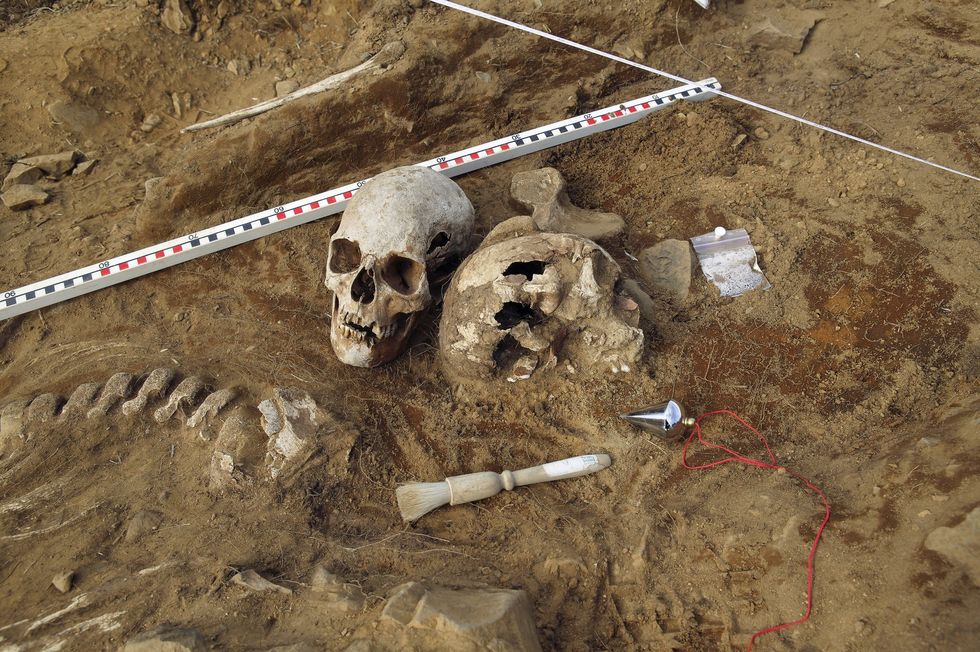Archaeologists find aftermath of Roman battle beneath football pitch in 'largest of its kind' discovery
Mysterious human remains found in bog believed to be over 2,000 years old
The discovery dates back to between 80 and 130 A.D., making it the largest find of its kind in Central Europe
Don't Miss
Most Read
Trending on GB News
Archaeologists have uncovered an ancient Roman mass grave beneath a Vienna football field, in what experts are calling a remarkable historical discovery.
The find was made last October by construction crews working in Vienna's Simmering neighbourhood, but was only announced by the Vienna Museum on April 2.
The necropolis contained the remains of 129 bodies, with dislocated bones suggesting as many as 150 victims in total.
The discovery dates back to between 80 and 130 A.D., making it the largest find of its kind in Central Europe.

The necropolis contained the remains of 129 bodies, with dislocated bones suggesting as many as 150 victims in total (Stock Image)
GETTY
The victims were all male, likely a mix of Roman soldiers and Germanic tribesmen.
Their remains were found haphazardly scattered, suggesting they were hastily dumped after battle.
Experts have identified various injuries on the bones, including wounds to the head, pelvis and torso.
This discovery represents the first-known mass grave of Roman soldiers and Germanic tribes in Vienna.
MORE LIKE THIS:
What makes the find particularly unusual is the presence of Roman soldiers at all, as they were typically cremated until the third century.
The battlefield nature of the site provides rare physical evidence of ancient combat.
Excavation leader Michaela Binder highlighted the unprecedented nature of the discovery, stating: "Within the context of Roman acts of war, there are no comparable finds of fighters."
"There are huge battlefields in Germany where weapons were found. But finding the dead — that is unique for the entire Roman history."

The ancient Roman mass grave was discovered beneath a Vienna football field
GETTY
Vienna archaeologist Kristina Adler-Wölfl confirmed the battlefield nature of the site, saying: "They have various different battle wounds, which rules out execution. It is truly a battlefield.
"There are wounds from swords, lances; wounds from blunt trauma."
Archaeologists used carbon-14 dating to determine the age of the bones, whilst also examining artifacts including armour and helmet cheek protectors.
"The most likely theory at the moment is that this is connected to the Danube campaigns of Emperor Domitian — that's 86 to 96 A.D.," explained Adler-Wölfl.
Though one victim has been confirmed as a Roman warrior so far, examination of the bones will continue.
Scientists hope to build a fuller picture of the soldiers and determine which sides they fought on.
The Vienna Museum shared details of this extraordinary find in a public presentation last week.







